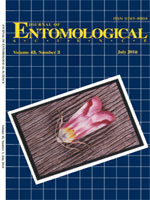
Bollworm (Lepidoptera: Noctuidae) Behavior on Transgenic Cotton Expressing Cry1Ac and Cry1F Proteins
No abstract available
